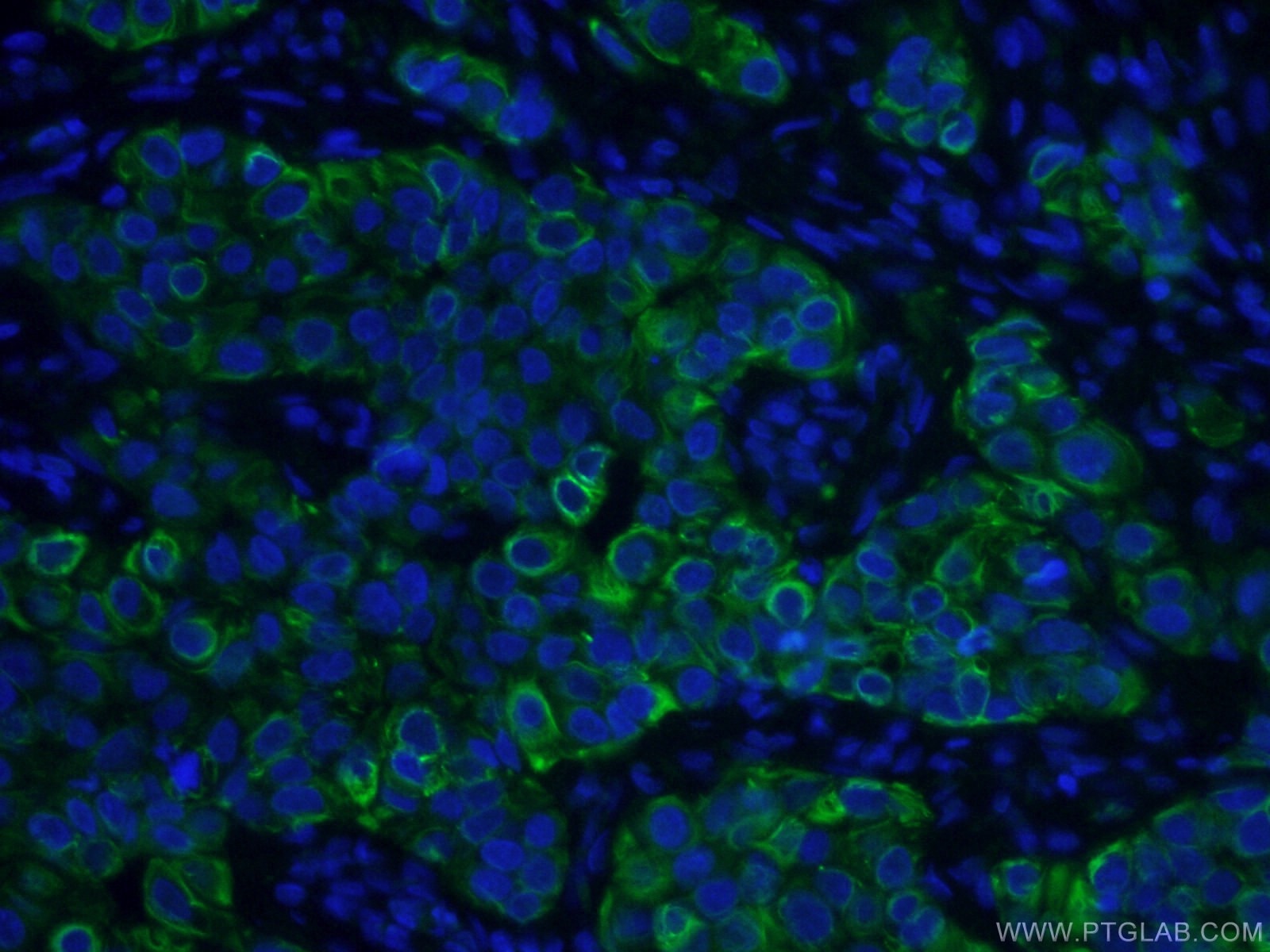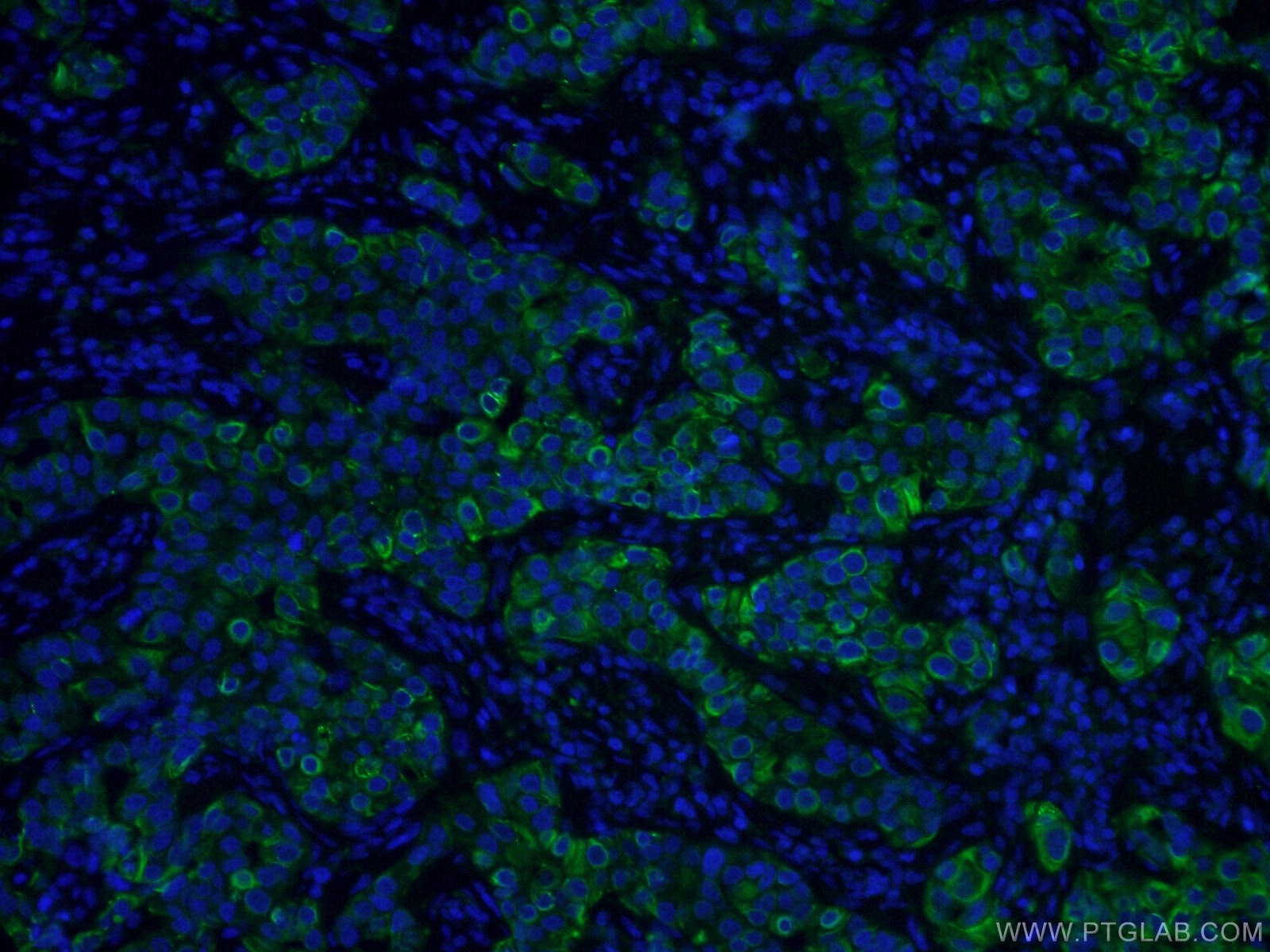- Phare
- Validé par KD/KO
Anticorps Monoclonal anti-TNF-alpha
TNF-alpha Monoclonal Antibody for IF-P
Hôte / Isotype
Mouse / IgG2b
Réactivité testée
Humain et plus (1)
Applications
WB, IHC, IF-P
Conjugaison
CoraLite® Plus 488 Fluorescent Dye
CloneNo.
7B8A11
N° de cat : CL488-60291
Synonymes
Galerie de données de validation
Applications testées
| Résultats positifs en IF-P | tissu de cancer du sein humain, |
Dilution recommandée
| Application | Dilution |
|---|---|
| Immunofluorescence (IF)-P | IF-P : 1:50-1:500 |
| It is recommended that this reagent should be titrated in each testing system to obtain optimal results. | |
| Sample-dependent, check data in validation data gallery | |
Applications publiées
| WB | See 1 publications below |
| IHC | See 1 publications below |
| IF | See 5 publications below |
Informations sur le produit
CL488-60291 cible TNF-alpha dans les applications de WB, IHC, IF-P et montre une réactivité avec des échantillons Humain
| Réactivité | Humain |
| Réactivité citée | Humain, souris |
| Hôte / Isotype | Mouse / IgG2b |
| Clonalité | Monoclonal |
| Type | Anticorps |
| Immunogène | TNF-alpha Protéine recombinante Ag11413 |
| Nom complet | tumor necrosis factor (TNF superfamily, member 2) |
| Masse moléculaire calculée | 233 aa, 26 kDa |
| Numéro d’acquisition GenBank | BC028148 |
| Symbole du gène | TNF-alpha |
| Identification du gène (NCBI) | 7124 |
| Conjugaison | CoraLite® Plus 488 Fluorescent Dye |
| Excitation/Emission maxima wavelengths | 493 nm / 522 nm |
| Forme | Liquide |
| Méthode de purification | Purification par protéine A |
| Tampon de stockage | PBS with 50% glycerol, 0.05% Proclin300, 0.5% BSA |
| Conditions de stockage | Stocker à -20 °C. Éviter toute exposition à la lumière. Stable pendant un an après l'expédition. L'aliquotage n'est pas nécessaire pour le stockage à -20oC Les 20ul contiennent 0,1% de BSA. |
Informations générales
TNF, as also known as TNF-alpha, or cachectin, is a multifunctional proinflammatory cytokine that belongs to the tumor necrosis factor (TNF) superfamily. It is expressed as a 26 kDa membrane bound protein and is then cleaved by TNF-alpha converting enzyme (TACE) to release the soluble 17 kDa monomer, which forms homotrimers in circulation. It is produced chiefly by activated macrophages, although it can be produced by many other cell types such as CD4+ lymphocytes, NK cells, neutrophils, mast cells, eosinophils, and neurons. It can bind to, and thus functions through its receptors TNFRSF1A/TNFR1 and TNFRSF1B/TNFBR. This cytokine is involved in the regulation of a wide spectrum of biological processes including cell proliferation, differentiation, apoptosis, lipid metabolism, and coagulation. This cytokine has been implicated in a variety of diseases, including autoimmune diseases, INS resistance, and cancer. The antibody is conjugated with CL488, Ex/Em 488 nm/515 nm.
Protocole
| Product Specific Protocols | |
|---|---|
| IF protocol for CL Plus 488 TNF-alpha antibody CL488-60291 | Download protocol |
| Standard Protocols | |
|---|---|
| Click here to view our Standard Protocols |
Publications
| Species | Application | Title |
|---|---|---|
PLoS Pathog SARS-CoV-2 spike-induced syncytia are senescent and contribute to exacerbated heart failure | ||
Biomed Pharmacother Nr2e1 ablation impairs liver glucolipid metabolism and induces inflammation, high-fat diets amplify the damage. | ||
Foods Effects of Dietary Pretreatment with All-trans Lycopene on Lipopolysaccharide-Induced Jejunal Inflammation: A Multi-Pathway Phenomenon | ||
Neural Regen Res Changes in border-associated macrophages after stroke: single-cell sequencing analysis | ||
Biomacromolecules Multifunctional Polymer Vesicles for Synergistic Antibiotic-Antioxidant Treatment of Bacterial Keratitis | ||
Front Pharmacol Licoricesaponin G2 ameliorates bleomycin-induced pulmonary fibrosis via targeting TNF-α signaling pathway and inhibiting the epithelial-mesenchymal transition |



